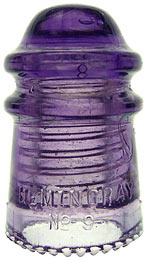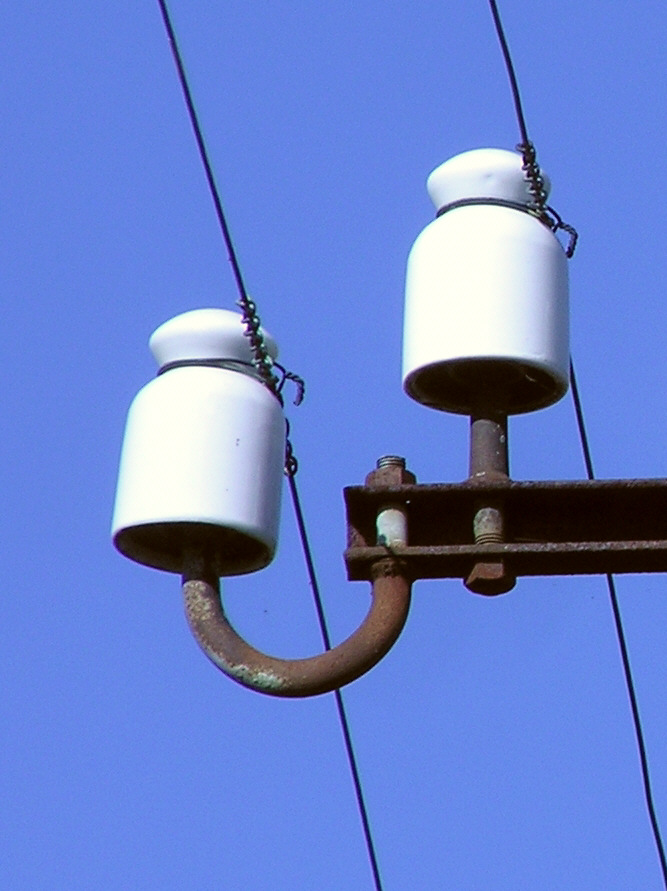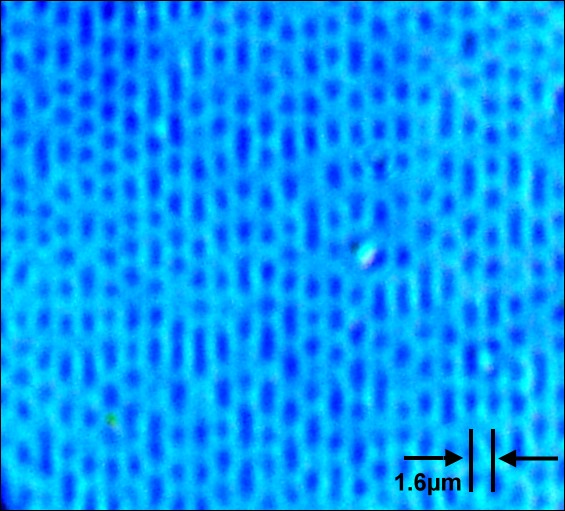|
Hemingray
The Hemingray Glass Company was an American glass manufacturing company founded by Robert Hemingray and Ralph Gray in Cincinnati in 1848. In its early years, the company went through numerous and frequent name changes, including Gray & Hemingray; Gray, Hemingray & Bros.; Gray, Hemingray & Brother; Hemingray Bros. & Company; and R. Hemingray & Company before incorporating into the Hemingray Glass Company, Inc. in 1870. The Hemingray Glass Company had factories in Cincinnati and Covington, Kentucky with main production in Muncie, Indiana. Although Hemingray was best known for its telegraph insulator (electricity), insulators, the company produced many other glass items including bottles, Mason jar, fruit jars, pressed glass plate (dishware), dishes, List of glassware#tumblers, tumblers, battery (electricity), battery jars, aquarium, fishbowls, lantern, lantern globes, and oil lamps. In 1933, the Owens-Illinois Glass Company purchased the company but retained the production facility in ... [...More Info...] [...Related Items...] OR: [Wikipedia] [Google] [Baidu] |
Muncie, Indiana
Muncie ( ) is an incorporated city and the county seat, seat of Delaware County, Indiana, Delaware County, Indiana. Previously known as Buckongahelas Town, named after the legendary Delaware Chief.http://www.delawarecountyhistory.org/history/docs/lenape-villages.pdf It is located in East Central Indiana, about northeast of Indianapolis. The 2020 United States Census, United States Census for 2020 reported the city's population was 65,194. It is the principal city of the Muncie metropolitan statistical area, which has a population of 117,671. The Lenape (Delaware (tribe), Delaware) people, led by Buckongahelas arrived in the area in the 1790s, founding several villages, including one known as Munsee Town, along the White River (Indiana), White River. The trading post, renamed Muncietown, was selected as the Delaware County seat and platted in 1827. Its name was officially shortened to Muncie in 1845 and incorporated as a city in 1865. Muncie developed as a manufacturing and indus ... [...More Info...] [...Related Items...] OR: [Wikipedia] [Google] [Baidu] |
Pin Insulator
A pin insulator is a device that isolates a wire from a physical support such as a pin (a wooden or metal dowel of about 3 cm diameter with screw threads) on a telegraph or utility pole. It is a formed, single layer shape that is made out of a non-conducting material, usually porcelain or glass. It is thought to be the earliest developed overhead insulator and is still popularly used in power networks up to 33 KV. Single or multiple pin insulators can be used on one physical support, however, the number of insulators used depends upon the application's voltage. Pin insulators are one of three types of overhead insulators, the others being strain insulators and suspension insulators. Unlike the others, pin insulators are directly connected to the physical support compared to being suspended from the wire. Pin insulators are shaped to allow the secure attachment of the conducting wire and avoid it coming adrift. The wire is usually attached to the insulator by being wrapped around i ... [...More Info...] [...Related Items...] OR: [Wikipedia] [Google] [Baidu] |
Pin Insulator
A pin insulator is a device that isolates a wire from a physical support such as a pin (a wooden or metal dowel of about 3 cm diameter with screw threads) on a telegraph or utility pole. It is a formed, single layer shape that is made out of a non-conducting material, usually porcelain or glass. It is thought to be the earliest developed overhead insulator and is still popularly used in power networks up to 33 KV. Single or multiple pin insulators can be used on one physical support, however, the number of insulators used depends upon the application's voltage. Pin insulators are one of three types of overhead insulators, the others being strain insulators and suspension insulators. Unlike the others, pin insulators are directly connected to the physical support compared to being suspended from the wire. Pin insulators are shaped to allow the secure attachment of the conducting wire and avoid it coming adrift. The wire is usually attached to the insulator by being wrapped around i ... [...More Info...] [...Related Items...] OR: [Wikipedia] [Google] [Baidu] |
Lantern
A lantern is an often portable source of lighting, typically featuring a protective enclosure for the light sourcehistorically usually a candle or a wick in oil, and often a battery-powered light in modern timesto make it easier to carry and hang up, and make it more reliable outdoors or in drafty interiors. Lanterns may also be used for signaling, as torches, or as general light-sources outdoors. Use The lantern enclosure was primarily used to prevent a burning candle or wick being extinguished from wind, rain or other causes. Some antique lanterns have only a metal grid, indicating their function was to protect the candle or wick during transportation and avoid the excess heat from the top to avoid unexpected fires. Another important function was to reduce the risk of fire should a spark leap from the flame or the light be dropped. This was especially important below deck on ships: a fire on a wooden ship was a major catastrophe. Use of unguarded lights was taken so serious ... [...More Info...] [...Related Items...] OR: [Wikipedia] [Google] [Baidu] |
CD 125 Hemingray No
The compact disc (CD) is a digital optical disc data storage format that was co-developed by Philips and Sony to store and play digital audio recordings. In August 1982, the first compact disc was manufactured. It was then released in October 1982 in Japan and branded as '' Digital Audio Compact Disc''. The format was later adapted (as CD-ROM) for general-purpose data storage. Several other formats were further derived, including write-once audio and data storage ( CD-R), rewritable media ( CD-RW), Video CD (VCD), Super Video CD (SVCD), Photo CD, Picture CD, Compact Disc-Interactive (CD-i) and Enhanced Music CD. Standard CDs have a diameter of and are designed to hold up to 74 minutes of uncompressed stereo digital audio or about 650 MiB of data. Capacity is routinely extended to 80 minutes and 700 MiB by arranging data more closely on the same sized disc. The Mini CD has various diameters ranging from ; they are sometimes used for CD singles, storing up to 24 minu ... [...More Info...] [...Related Items...] OR: [Wikipedia] [Google] [Baidu] |
CD 124 Hemingray No
The compact disc (CD) is a digital optical disc data storage format that was co-developed by Philips and Sony to store and play digital audio recordings. In August 1982, the first compact disc was manufactured. It was then released in October 1982 in Japan and branded as '' Digital Audio Compact Disc''. The format was later adapted (as CD-ROM) for general-purpose data storage. Several other formats were further derived, including write-once audio and data storage ( CD-R), rewritable media ( CD-RW), Video CD (VCD), Super Video CD (SVCD), Photo CD, Picture CD, Compact Disc-Interactive (CD-i) and Enhanced Music CD. Standard CDs have a diameter of and are designed to hold up to 74 minutes of uncompressed stereo digital audio or about 650 MiB of data. Capacity is routinely extended to 80 minutes and 700 MiB by arranging data more closely on the same sized disc. The Mini CD has various diameters ranging from ; they are sometimes used for CD singles, storing up to 24 minu ... [...More Info...] [...Related Items...] OR: [Wikipedia] [Google] [Baidu] |
CD 122 Hemingray No
The compact disc (CD) is a digital optical disc data storage format that was co-developed by Philips and Sony to store and play digital audio recordings. In August 1982, the first compact disc was manufactured. It was then released in October 1982 in Japan and branded as '' Digital Audio Compact Disc''. The format was later adapted (as CD-ROM) for general-purpose data storage. Several other formats were further derived, including write-once audio and data storage ( CD-R), rewritable media ( CD-RW), Video CD (VCD), Super Video CD (SVCD), Photo CD, Picture CD, Compact Disc-Interactive (CD-i) and Enhanced Music CD. Standard CDs have a diameter of and are designed to hold up to 74 minutes of uncompressed stereo digital audio or about 650 MiB of data. Capacity is routinely extended to 80 minutes and 700 MiB by arranging data more closely on the same sized disc. The Mini CD has various diameters ranging from ; they are sometimes used for CD singles, storing up to 24 minu ... [...More Info...] [...Related Items...] OR: [Wikipedia] [Google] [Baidu] |
CD 121 Hemingray No
The compact disc (CD) is a digital optical disc data storage format that was co-developed by Philips and Sony to store and play digital audio recordings. In August 1982, the first compact disc was manufactured. It was then released in October 1982 in Japan and branded as '' Digital Audio Compact Disc''. The format was later adapted (as CD-ROM) for general-purpose data storage. Several other formats were further derived, including write-once audio and data storage ( CD-R), rewritable media ( CD-RW), Video CD (VCD), Super Video CD (SVCD), Photo CD, Picture CD, Compact Disc-Interactive (CD-i) and Enhanced Music CD. Standard CDs have a diameter of and are designed to hold up to 74 minutes of uncompressed stereo digital audio or about 650 MiB of data. Capacity is routinely extended to 80 minutes and 700 MiB by arranging data more closely on the same sized disc. The Mini CD has various diameters ranging from ; they are sometimes used for CD singles, storing up to 24 minu ... [...More Info...] [...Related Items...] OR: [Wikipedia] [Google] [Baidu] |
CD 113 Hemingray No
The compact disc (CD) is a digital optical disc data storage format that was co-developed by Philips and Sony to store and play digital audio recordings. In August 1982, the first compact disc was manufactured. It was then released in October 1982 in Japan and branded as '' Digital Audio Compact Disc''. The format was later adapted (as CD-ROM) for general-purpose data storage. Several other formats were further derived, including write-once audio and data storage ( CD-R), rewritable media ( CD-RW), Video CD (VCD), Super Video CD (SVCD), Photo CD, Picture CD, Compact Disc-Interactive (CD-i) and Enhanced Music CD. Standard CDs have a diameter of and are designed to hold up to 74 minutes of uncompressed stereo digital audio or about 650 MiB of data. Capacity is routinely extended to 80 minutes and 700 MiB by arranging data more closely on the same sized disc. The Mini CD has various diameters ranging from ; they are sometimes used for CD singles, storing up to 24 minu ... [...More Info...] [...Related Items...] OR: [Wikipedia] [Google] [Baidu] |
CD 107 Hemingray No
The compact disc (CD) is a digital optical disc data storage format that was co-developed by Philips and Sony to store and play digital audio recordings. In August 1982, the first compact disc was manufactured. It was then released in October 1982 in Japan and branded as '' Digital Audio Compact Disc''. The format was later adapted (as CD-ROM) for general-purpose data storage. Several other formats were further derived, including write-once audio and data storage ( CD-R), rewritable media ( CD-RW), Video CD (VCD), Super Video CD (SVCD), Photo CD, Picture CD, Compact Disc-Interactive (CD-i) and Enhanced Music CD. Standard CDs have a diameter of and are designed to hold up to 74 minutes of uncompressed stereo digital audio or about 650 MiB of data. Capacity is routinely extended to 80 minutes and 700 MiB by arranging data more closely on the same sized disc. The Mini CD has various diameters ranging from ; they are sometimes used for CD singles, storing up to 24 minu ... [...More Info...] [...Related Items...] OR: [Wikipedia] [Google] [Baidu] |
CD 106 Hemingray No
The compact disc (CD) is a digital optical disc data storage format that was co-developed by Philips and Sony to store and play digital audio recordings. In August 1982, the first compact disc was manufactured. It was then released in October 1982 in Japan and branded as '' Digital Audio Compact Disc''. The format was later adapted (as CD-ROM) for general-purpose data storage. Several other formats were further derived, including write-once audio and data storage ( CD-R), rewritable media ( CD-RW), Video CD (VCD), Super Video CD (SVCD), Photo CD, Picture CD, Compact Disc-Interactive (CD-i) and Enhanced Music CD. Standard CDs have a diameter of and are designed to hold up to 74 minutes of uncompressed stereo digital audio or about 650 MiB of data. Capacity is routinely extended to 80 minutes and 700 MiB by arranging data more closely on the same sized disc. The Mini CD has various diameters ranging from ; they are sometimes used for CD singles, storing up to 24 minu ... [...More Info...] [...Related Items...] OR: [Wikipedia] [Google] [Baidu] |
Utility Pole
A utility pole is a column or post typically made out of wood used to support overhead power lines and various other public utilities, such as electrical cable, optical fiber, fiber optic cable, and related equipment such as Distribution transformer, transformers and street lights. It can be referred to as a transmission pole, telephone pole, telecommunication pole, power pole, hydro pole, telegraph pole, or telegraph post, depending on its application. A Stobie pole is a multi-purpose pole made of two steel joists held apart by a slab of concrete in the middle, generally found in South Australia. Electrical wires and cables are routed overhead on utility poles as an inexpensive way to keep them insulated from the ground and out of the way of people and vehicles. Utility poles can be made of wood, metal, concrete, or composites like fiberglass. They are used for two different types of power lines: ''sub transmission lines'', which carry higher voltage power between substations, ... [...More Info...] [...Related Items...] OR: [Wikipedia] [Google] [Baidu] |

.jpg)






